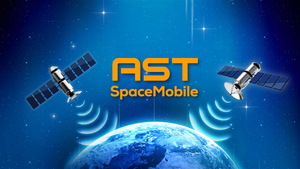By Meg Flippin Benzinga
DETROIT, MICHIGAN - May 22, 2025 (NEWMEDIAWIRE) - Space travel, at least at the federal government level, is taking a hit as the Trump Administration seeks to cut costs. It is reducing NASA’s budget by 24% to $18.8 billion in 2026 from $24.8 billion in 2025. While that marks the lowest budget for NASA since 2015, it isn’t across the board. Certain key programs – including Artemis, NASA’s program aimed at sending humans to the Moon and NASA’s Mars Exploration Program (MEP), which is a long-term program aimed at exploring Mars – are getting reductions in budget dollars, but they aren’t being canceled altogether.

Plus, the private sector is more than willing to pick up the slack in what is projected to be a booming market in the years to come. How much? Potentially to the tune of $2 trillion by 2040. Sure, the government will play a role, but private companies are projected to take the lead in terms of investments, innovation and commercialization. Companies like SpaceX and Blue Origin have already demonstrated their commitment to space exploration.
The Sun Is Still Shining For Ascent Solar
That’s welcome news for Ascent Solar Technologies (NASDAQ: ASTI), the maker of featherweight, flexible and durable CIGS thin-film photovoltaic (PV) solutions that have the potential to power everything from spacecraft to satellites in space. The company has been making a mark in space exploration and doesn’t expect to be impacted by what’s going on at the federal level.
After all, using solar for space exploration has several benefits over the current way of sending satellites and spacecraft beyond the Earth’s atmosphere. For starters, such solar technology isnt impacted by day and night or inclement weather in space, so it can operate continuously. Plus, it can achieve higher power output in space than on Earth, and because the environment is less harsh, it doesn’t need much in the way of maintenance. On top of all that, solar is a clean power source and flexible, which means it can be affixed to everything from a spacecraft to a satellite.
Space exploration requires a lot of power, and the space exploration plans on the horizon will require greater electric propulsion apart from power in space – finding a cheaper and cleaner way is a focus of NASA and the private sector. That bodes well for Ascent and also helps achieve goals with the fiscal responsibility necessitated by the budget cuts.
Plus, in the not-too-distant future, manufacturing of multiple products may even happen beyond the Earth’s atmosphere. Known as orbital manufacturing or in-space manufacturing, it entails that the manufacturing process – be it fabricating, assembling, developing or integrating materials and goods – occurs in space. That could mean building a rocketship, a space station, a launchpad or anything else needed for space exploration outside Earth’s atmosphere. It may also usher in a new era of developing pharmaceuticals, skin care products, semiconductors and a host of other products in space. It’s getting the attention of both NASA and the private sector, underscoring how investment dollars are coming from outside the government.
NASA has already given $2 million in grants to scientists who are exploring ways to produce new stem cells and gene therapies in space, while defence company Northrop Grumman Corp. is teaming up with a startup that wants to make semiconductors outside of Earth’s atmosphere. Drug company Merck & Co. Inc. has enlisted scientists from the International Space Station to help it develop its oncology drug Keytruda in space, while Bristol-Myers Squibb Co. researchers are testing how to use off-planet resources to make storing drugs easier. That’s just a few examples of real-world developments on this front.
Ascent Solar’s Technology In The Driver’s Seat
What makes Ascent Solar’s push into space promising, even in light of budget reductions by NASA, is the company’s proprietary technology. The company’s solar panels are thin-film photovoltaic (PV) cells, which weigh little, are flexible and bendable and can perform well in the dark. With Ascent Solar’s technology, energy is beamed from satellites or orbital vehicles to these thin, flexible PV panels affixed to the spacecraft via microwave or laser beam. Once captured in the CIGS PV modules, the spacecraft will be able to go further, for longer periods of time. Plus, the spacecraft will be lighter and cheaper to make because it has fewer parts and needs less equipment to power it, reports Ascent.
For all those reasons, Ascent says its work with NASA – including on programs like Artemis and the MEP, where the company says it could potentially be included – won’t be impacted by the budget cuts. The company recently inked a collaboration deal with NASA Marshall Space Flight Center, with support from NASA Glenn Research Center (GRC) to develop a spacecraft that can receive beamed power using Ascent Solar’s CIGS PV modules. It’s part of NASA’s mission to develop the ability to do more in space at a fraction of the cost.
Beyond its work with NASA, Ascent says it is in talks with a major defense contractor, multiple deployable technology companies and a satellite company to complete integration testing of Ascent’s CIGS solar technology. The end goal is to successfully test and integrate its technology to secure long-term agreements. That, says Ascent, will potentially provide consistent annual revenue with a diverse set of customers in the space market. These partnerships could also help the company further develop thin-film PV capabilities suited for space environments, beamed power applications and satellite power systems.
“To the moon and beyond” may have taken a hit with NASA getting its budget cut, but the private sector is on board to explore beyond the Earth’s atmosphere. Solar power is expected to play an important role in that evolution. Ascent Solar says it is positioning itself to benefit from that, as it appears the sun isn’t quite setting on this growing industry.
Featured image sourced from Shutterstock.
This post contains sponsored content. This content is for informational purposes only and is not intended to be investing advice.
This content was originally published on Benzinga. Read further disclosures here.
View the original release on www.newmediawire.com






